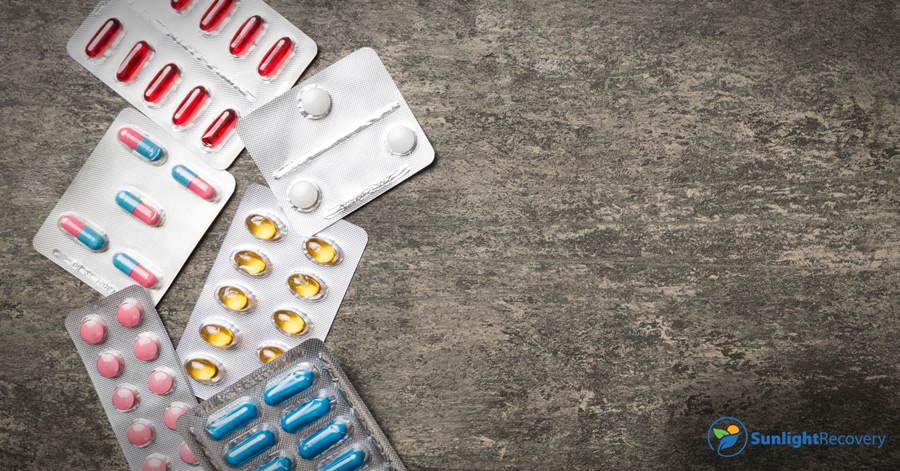Opiate drugs come in many different forms. From heroin and fentanyl to morphine and codeine, all opiates have the potential for addiction. Some people addicted to opiates take multiple types of opiates simultaneously to get high. This practice is incredibly dangerous and is one of the most common causes of drug-related deaths. Many people are also unsure about which medications count as opiates, asking questions such as “Is Valium an opiate?” Here you can find answers to this and other questions.
If you or someone you know is mixing opiates, it’s very important to get treatment as soon as possible. When mixing opiates, it’s difficult to predict the effects and stick to safe doses. Opiate addiction recovery treatment can help break the habit and allow people to live a life free from opiates.
What Are Opiates?
Opiates are drugs derived from or related to opium, which is a natural substance extracted from the poppy plant. Opium resin naturally contains morphine, a strong opiate drug commonly used as a painkiller. Morphine can be modified to produce diamorphine, also known as heroin. Other opiates include codeine, which is also found naturally in opium, and the synthetic drug fentanyl. All these drugs have similar impacts on the body, although the methods of taking them and speed of effects can vary.
What Do Opiates Do to the Body and Brain?
Opiates are used extensively in medicine for the treatment of pain. In addition to treating pain, opiates can produce feelings of euphoria, particularly when used in high doses. Many people become addicted to the feeling of well-being that comes from taking opiates. Unfortunately, this effect is short-lived, which means it’s necessary to take more to continue feeling good. Taking opiates regularly can change brain chemistry, leading to withdrawal symptoms when you stop taking the drug.
Opiates also have a range of effects on the body. They cause central nervous system depression, which means they slow your breathing and heart rate and lower your blood pressure. This effect is very dangerous if someone takes too much of an opiate drug or mixes opiates together to enhance their effect.
Most Commonly Abused Opiates
Here are some of the opiates that are most commonly abused. People addicted to opiates will often combine different kinds when they can’t get enough of their preferred drug or to create more extreme effects.
Hydrocodone
Hydrocodone is used in a long-acting form to treat severe chronic pain. It’s also available in combination with acetaminophen in many brand-name painkillers, including Lortab. Morphine and hydrocodone are very similar opiates and when used together can create an extremely potent effect, which can be dangerous.
Codeine
Codeine may be found either alone or in combination with acetaminophen in many pain medications. In addition to treating pain, codeine is also highly effective as a cough suppressant.
Heroin
Unlike other commonly abused opiates, heroin isn’t prescribed as a medication. Instead, it’s an illegal drug. In fact, the DEA classifies heroin as a Schedule 1 drug, which means it has a high potential for abuse and no accepted medical uses.
Methadone
Methadone is most famously used to treat people addicted to heroin. Heroin users can be prescribed methadone as a safer alternative to street heroin to control their cravings during recovery. However, some people in this situation begin using methadone and heroin together, which is very dangerous. Combining methadone and norco (another name for hydrocodone) also poses a high risk of overdose.
Fentanyl
Unlike many other opiates that are derived from the opium poppy plant, fentanyl is synthesized in a laboratory. It’s almost 80 times stronger than morphine. Drug dealers often add fentanyl to heroin to make the drug stronger, which can lead to accidental overdoses.
Dangers of Combining Opiates
Taking opiates without medical oversight is always dangerous. However, mixing different opiates together can make the dangers even worse. The combination of two or more drugs on the central nervous system can cause your heart to fail or you to stop breathing. Be aware of the following symptoms that can arise from mixing opiates, either intentionally or unintentionally.
- Drowsiness
- Confusion
- Lack of muscle control
- Poor hand/eye coordination
- Falling asleep or unconsciousness
- Amnesia
- Vomiting
- Irregular heartbeat
- Slower-than-normal breathing
- Low blood pressure
- Organ failure
- Coma
Some of these symptoms can be fatal. For example, vomiting while unconscious can lead to choking. It’s also possible for breathing and heart rate to become so disrupted that the brain doesn’t get the oxygen it needs, leading to death.
Withdrawal Symptoms From Mixing Opiates
Someone who tries to stop using a combination of opiates can experience severe withdrawal symptoms that could themselves be life-threatening. It’s important to seek professional treatment to help with recovery from opiate abuse.
Is Valium an Opiate?
Opiates can also be dangerous when mixed with other types of drugs. For example, the combination of opiates with diazepam, also known as Valium, can be very dangerous, even though Valium is not an opiate.
Valium isn’t a painkiller, but it has some other effects that are similar to those of opiates. For example, many people who use it experience mild euphoria as well as drowsiness. Like opiates, Valium also reduces activity in the central nervous system, although it does by promoting the release of a neurotransmitter called GABA, rather than by binding to opiate receptors in the brain.
Valium is used to treat anxiety and insomnia. The problem is that it’s very addictive and users quickly develop a tolerance, which means needing to take more and more of it to get the same effect.
Many people use Valium and opiates together — for example, Valium and Lortab — hoping to get a stronger high by combining the effects of the two drugs. Even though Valium isn’t an opiate, this is still very dangerous. The dual attack on the central nervous system can lead to heart failure or make you stop breathing. That’s why it’s important to get treatment for both opiate addiction and Valium abuse.
Getting Help for Mixing Opiates
If you’re mixing opiates in an attempt to get the effects you crave, it’s important to seek help as soon as possible. Contact us today at Sunlight Recovery to find out about treatment options for opiate addiction so you can take your first steps towards recovery.






